#hella slaves to capitalism
Text
first shift back at work since september place ur bets how many stupid mistakes im gonna make
#literally listening to night shift rn it’s like i don’t even want to succeed#it’s the XMAS SEASON TOO 😭 it’s gonna be sooo busy kms kms kms#oh well I’ve missed my coworkers so it’s swings and roundabouts#and im closing which is always cute in winter bc it’s just all cosy and quiet when u clock out 🫶🏼#hella slaves to capitalism
30 notes
·
View notes
Note
HAPPY PRIDE
HAPPY PRIDE ANON 🌈🏳️🌈✨
#if any of u messaged me and i havent replied yet#just kno that i will reply#im just hella busy this month#3 assignment deadlines#5 midterm tests#another 2 extra assignments for English I think#oh no i have to work on 2 other assignments this month as well#Statistics and Psychology#presentation on my birthday bro thanks i guess#the textbooks also hella thick#i'm just thoughts and prayer#my birthday month and im here working hard to become a slave to capitalism smh#asks
15 notes
·
View notes
Text
Where they fall in omegaverse Dynamics (stardew edition)
A/N: no i don’t know what’s wrong with me but now we all get to experience the inner workings of my mind :) enjoy OBVIOUSLY KIDS ARE NOT INCLUDED I was gonna do everyone but decided I didn’t know enough about a lot of the characters so only people I know :)this is hella old btw
Tw: sexual mentions, cursing, some insults to certain characters but like that’s not new here.
Genre: shitpost, headcanons
Masterlist
Alpha- top of the hierarchy. Dominant, and usually in charge. Hot heads and breeders.
Abigail- i think she would be an alpha that acts like a beta or omega. No one would actually know she’s an alpha until she loses her temper or goes off scent blockers or something.
Alex- typical dudebro and will be doing the breeding thank you. I feel like he would be a stereotypical alpha like this is a given.
Sebastian- DONT KILL ME PLS this is kinda biased because I know for a fact that I am literally Penny but an actual person and he is the one I am attracted to so naturally I want to put him here. I am probably delusional but I also think he could take charge so hmph.
Shane- can’t see him being bred bc i think he would be doing the breeding. When he takes control of his insecurities and stuff I think he could be super confident and leader like. Just needs to not be depressed.
Pierre- it’s his personality tbh. Like while I desperately do not want him to be in this category based on how much I dislike him, he would go into this category purely because of how he acts. He wants the most money, he’a the “man of the house” and provider, he has a temper he would just be an annoying alpha.
Kent- sexy hawt military man is obviously an alpha. There is no way he is being bred, there is no way he is going to be the homemaker, being an alpha is literally the only thing that makes sense for him.
Mr.Qi - he gives off alpha vibes, no omega or beta could be this confident and mysterious for absolutely no reason other than just being that way idk.
Evelyn - she gives off the vibes that when she and George were younger they were the “it’s fine/HE ASKED FOR NO PICKLES” couple. I think she could whoop somebody’s ass back in the day.
Robin- she is the woman with a business, she is providing, she is building, she is alpha no question about it.
Gunther- it’s the way he tips his hat idk. Also the way he’s just like “oh you don’t have any cool artifacts? Get out of my face then.” Maybe not that mean but like vibes.
Sandy- HAVE YOU SEEN HER? she is alpha, the would never be a beta or omega that is not her style at all sorry.
Marlon- man kills monsters for a living. Like no omega is going to waste time on that or even do that if I’m honest. Leave monster killing to the people who don’t have other things to do.
Pam- she gives off alpha that had their omega leave them vibes and that’s why she’s a crappy mother because it was not supposed to be her job.
Lance- literally a fighter/adventurer. The man protects and attacks he has to be an alpha, there is no way an omega can do this, and due to him being an active adventurer, and him being protective makes him more alpha than beta.
Olivia- an alpha mother that wants her beta son(spoiler) to be more like her. She active in getting money, or at least I think she has stocks. And she’s more ambitious than I think an omega or beta would be.
Andy-is this because he gives off asshole vibes? Mayhaps. He just seems like he’s an alpha whose family left him so he’s bitter at the world. A corpo slave to so where else would he go?
Suki- boss bitch that actually sneaks into the capital(or whatever it is) and steals and gets other people to give her contraband so she can sell it to bitches at a high price for her risking her life. Would never bow down to anyone.
Beta- in the middle simply because they are neither dominant nor submissive. They do not give off smells nor do they have heats or ruts. Basic people tbh.
Emily- she is just vibes. No amount of sex or heats or ruts or pheromones will bother her. She is above that and is too busy making clothes for birds.
Leah- I think she would literally just be middle ground because she gives off those vibes. Also because I think she could possibly end up with either an alpha or omega, it literally doesn’t matter to her.
Maru- she is literally just science. I am sorry but there is no time for breeding and going feral because of heats, she needs to make this robot and she needs to make it now.
Harvey- I also would’ve put him in Omega but since he is a doctor I feel like that means he is a beta. Like I don’t think alpha or omegas would be able to have this job since instincts and stuff are a major part in how they act. Betas would be able to ignore everything else and just work idk.
Clint- doesn’t give omega vibes but definitely is not an alpha. Like not to jump on the Clint hate train, but he gives off angry beta vibes that wishes he was an alpha. He doesn’t have confidence, and he seems like a loser tbh. He probably wishes he was an alpha to get Emily, or even any girl that he likes, but doesn’t realize that she and maybe even the rest don’t really care if he’s an alpha or not so he’s mad for nothing.
Morris- he is literally just a worker bee. No sex, no love, just working and getting to the top and having money. The man is only ruled by money, no amount of good smelling things and sexy prospects will entice him.
Willy- a man who just wants to fish. He also gives off alpha vibes, but I think he is too comfortable to be around and too chill and level headed to be an alpha. Love him.
Magnus- I think he just magically made himself a beta in order to not have any distractions. Was married once, it was a mistake, he impregnated a person that lives in Pelican Town (*cough* Caroline *cough*) and she went back to her husband so he doesn’t want any other distractions. It’s only time for magic and protecting the town.
Linus- cannot be an alpha or omega and be comfortable living alone in a tent. He is just a nature man and it would not make any sense for him to be anything but a beta.
Demetrius- like father like daughter, the only thing that matters is science he just somehow ended up with a hot wife. She is happy being a provider and he is happy doing his science.
Grandpa- I have no idea I refuse to put him under either because it’s either admitting he is fuckable and submissive or dominant and a fucker. Absolutely not.
Lewis- hate him he has baby balls with how he treats Marnie, yeah he’s a leader being mayor, but no true alpha would act like this. He’s an asshole that is making himself seem like an even bigger asshole in an attempt to seem like an alpha.
Victor- is only ambitious about things he cares about, which is similar to the others on this list. Doesn’t wish to really do anything with his life other than what he is passionate about, like bridges.
Susan- all she wants to do is be on her farm as far as I know. I would’ve put her in alpha but she doesn’t give off those vibes she just seems normal? Like she’s able to take charge but won’t if she doesn’t have to?
Omega - definition of submissive and breedable. At the bottom of the hierarchy and their main purpose is to breed and serve the alphas. Sadge.
PENNY- the literal definition of submissive and breedable. Like yes? This is her actual dream? She would love this.
Haley- has the personality of an Alpha but is not one. Just extremely bratty. The right person will make her submit naturally and not just because of her status.
Sam- sweet boy Sam is deffo an omega. Maybe not super submissive but I think that underneath the childishness he would be a good homemaker. Like I think that his relationship with his younger brother shows that he is on the more nurturing side rather than the I have to provide side.
Elliott- Elliott stans don’t hate me. But he gives off worshiper vibes and not the person being worshipped. Maybe it’s his love notes and letters but I think he would do good with an alpha he could serenade all day.
Caroline- I feel like only an omega could deal with Pierre. She always complains about him working all the time and how he behaves but she never does anything about it. Omega behavior.
Jodi- an omega that hates being an omega. She is in charge of child rearing, and is the homemaker but hates it. Wishes she could be a beta and wishes she could’ve waited to get married and have kids. She is so unhappy this is her biology.
George- Evelyn’s bitch. I’m sorry. But like we all know that George is Evelyn’s sub. Idc.
Marnie- the most obvious out of the villagers that isn’t a bachelorette. Like yearns for a family and marriage and romance. She wants it, she needs it, unfortunately attached herself to an asshole.
Gus- yes he is a business man, but all he cares about is feeding everyone and providing a place for them to Hang out. He is an omega that found his calling in serving people instead of having kids and we love him for it.
Sophia- this girl isn’t Alpha at all. Like bffr she’s depressed, shy, and quiet. And her hobby is cosplay. Girl is one hundred percent an omega. Even though she owns her parents company, I think she isn’t like business motivated, only is happy that it’s this company specifically and allows her to garden idk.
Claire- she is different from the others on this list. Because she is motivated, she wants to be an actress and does work and provide for herself. I think though if she met the right person that would provide while she chases her dreams she would like it. Even her hobbies seem soft to me (reading, ballet. )
#stardew valley#sdv#stardew#stardew expanded#ridgeside village#stardew valley headcanons#stardew valley shitpost#sdv shitpost#sdv headcanons#stardew shitpost#stardew headcanon#sdv penny#sdv leah#sdv abigail#sdv maru#sdv emily#sdv haley#sdv alex#sdv elliott#sdv sebastian#sdv sam#sdv harvey#sdv shane#sdv hcs#stardew sebastian#stardew sam#stardew harvey#stardew shane#stardew valley penny#stardew valley elliott
58 notes
·
View notes
Text
Camp Krell - chapter one, part four
Right, so there are ten cabins in total, five that hold three campers, and five that hold five campers. When you first enter the cabin, you’d be in the kitchen, a large open space with an island in the centre. Kitchens are fully equipped to the point where they could be classed as proper industrial kitchens. I mean, hell, we even have freeze-dryers! Anyways, there’s a door at the back of the kitchen that leads to the living room, one of the bathrooms and the stairs up to the second room, with a lot of sofas, beanbags and other supersnug seating, plus a large TV mounted to a wall. Once you head up the stairs, you get to the main event: the comfiest bedroom in any summer camp in the world! Okay, that might be an exaggeration. But they’re still like, hella comfy. There are three single beds in a three-person cabin, but the five-person cabins have two bunk beds and a single bed. Both types of cabin have the beds arranged in - you guessed it - another semicircle, and the flat wall they’re facing has a whiteboard that doubles as a projector screen. The only reason I know this much about the five-person cabin when I'm staying in a three-person open is because Noto’s staying in a five-person cabin. We tend to spend quite a bit of time with him and his cabin mates, since movie nights are completely epic chaos with pillows flying everywhere.
Now that that’s over with, back to Fayne, who had divided the board into three sections titled ‘Deal demons’, ‘Subservients’ and ‘High lords’. “Right, sit your traumatised asses down; Professor Fayne’s giving you a crash course on the demonic hierarchy.” I already knew this was going to be a long explanation, so I gingerly rested my head on Kaffeyne’s shoulder the moment she took her usual spot next to me on my bed.
“There are three kinds of demons, deal demons, subservients and high lords. We’ll start with the high lords, since they are the simplest to explain. There are five lords at a time, no more, no less. They are the strongest demons, and no other demon can enter their territory without their permission. If a high lord is killed by another demon, the demon takes their place. Most high lords have a strong hatred for deal demons, even if they used to be one. They are greedy, territorial power vacuums and it’s always a race to see what demons take their place. So, like capitalism really.” As she spoke, she wrote the key points for the demons in their section. I’ve said this to her before, but Fayne would make a great teacher. She explains things so clearly!
“Moving on to the deal demons, they have four subsets; soul reapers, puppeteers, greed collectors and envy slaves. Soul reapers and puppeteers have the most in common, so I’ll go through them first. They both strike deals with humans to steal their souls, and are very fond of long, drawn out contracts instead of the quick deal. However, what they do with the souls is different. Reapers eat or consume the souls in some way, leaving the husk of a body behind, but puppeteers steal the souls and drag them down to their own demonic pocket realm to use as thralls for the rest of eternity. Honestly, those two are the worst possible option for finding a demon out in the wild.” Noto groaned upon hearing this, interrupting Kaffeyne’s… teaching? Lecture? I don’t know.
“Of course we’re stuck with one of the worst possible options living inside the woods outside of this stupid camp…”
“Shut up and let me finish, I still have a lot to cover.”
“Right, sor-“
“Shush.” Noto remained completely silent. What a simp. I swear, those two need to kiss or something, the romantic tension between those two is so palpable!
“Right, back to where I was before I was so rudely interrupted-” “I apologised!” “No. ANYWAYS, moving on to the other two categories of demon; greed collectors and envy slaves. Greed collectors are materialistic, their contracts are always a person’s entire wealth, net worth and then some. They aren’t picky with who they make deals with, as long as they can grow their wealth they’re happy. That’s why they’re often known as diplomatic dragons, they are willing to talk their way into any deal as long as it grows their hoard. Greed collectors are the only demons known to be able to create other demons, as humans who fail to complete their contract within the usually short time period have their spirits bound to the sin of envy, forever jealous of those who have more wealth.”
“Wait… people can become demons?!” That concept terrified me. What if I was turned into a thing like the Krell?!
“Calm down Tam, its highly uncommon. And envy slaves are never fully transformed into demons, they’re partially turned. To fully turn someone, you’d have to replace all of their blood with demonic ichor, which is a difficult and painstaking process, since you’d have to keep them alive whilst doing this. Ah- don’t, Noto. I’ll answer questions once I’m done.”
“Fine.”
#writers on tumblr#female writers#creative writing#writers#writing#writer#writeblr#writerscommunity#original character#original story#camp krellden
3 notes
·
View notes
Text
I've never once entered a fandom where my first thought was to use the block button immediately on some tumblrs, but hoo boy, IWTV/VC fandom, I have considered it.
I mean, I love the fandom and all the joy it brings. It was my little niche literary bible for middle school/high school/baby me who was trying to figure out where I fell into this "idk who I am because I'm goth, but don't dress it, I'm a POC who's been called an oreo, and I'm struggling to figure out my sexuality and gender identity" hole that I was in. And VC/1994 film was there for me.
But holy shit, some of y'all seemed hella determined to hate the show before it even started. In a way, that to me, makes it seem like you needed to quickly find super small reasons to hate the show that wasn't for obvious purposes.
Like hating the fact that the D in du Lac is capitalized, on a letter that's written in cursive. Like aside from the fact that I'm surprised anyone writes in cursive other than me, it's a super small production error for a prop. That shit happens all the time.
Or hating the fact that Louis now runs and owns brothels (but he owned plantations in the novel! I hear some cry). Yea, and they touch on the fact that Louis had to adapt to survive in a world that was against him, especially seeing as how his father, a free black man, owned slaves and ran a plantation. Which is something I didn't even know was a thing. But even then people complained, not about anything noteworthy, but for the mere fact that it wasn't a sugar plantation but a lavender one.
It's just these really small things. These small details, this outcry of how the show isn't like the novels, when it very much is. It very much is similar to the tone and style of the novels, but trimmed up much neater in that non rambling way that Anne Rice tended to write in. Or the outcry of how Anne Rice would have hated the display of her vampires getting it on. Like...the same Anne Rice who wrote extreme bodice ripper's in her free time? That Anne Rice?
#I've never seen some people inhabit a fandom in which they are so salty#That they're saltier than Lot's wife#like I have half a mind to worry about these same people's blood pressures#Because being mad about this on such a level can't be good for your health#fandom wank#interview with the vampire#iwtv#iwtv amc#cryptid speech#I'm still going to enjoy this fandom in my own way#But that block button is going to be dusted off and and USED#Also I just remembered but literally the people complaining that the show didn't show Louis' faith enough#like babe did we watch the same show?#Because Louis was serving enough catholic vibes and catholic guilt to respark a splintering of the catholic church all over again
29 notes
·
View notes
Text
while im thinking about it i just have to say i really hate how people say "no we shouldnt do that because prices will go up and we'll have to pay more taxes!" and its like. do you want a livable world for the people that come after us or do you wanna keep suffering and struggling. LIKE REGARDLESS, prices will keep rising, why not raise the minimum wage? like REGARDLESS we have immigrants (usamerica literally is built off immigration but whatever right) why not give them the resources they need? i dont understand these fucking selfish ass society we live in (capitalism) where we dont have the capacity for respect and decency for OTHER PEOPLE??? people say capitalism is good because we get cheap chocolate and selection of cereals but i would willingly eat like one typa cereal the rest of my life if it meant no slave labor. or children in sweatshops. like i would personally love to live in a world where people cant say "your shoes were made by a 11 yr old girl in Taiwan" like why do rich people never feel guilt. wheres the conscience. how would you feel if it was your daughter? or sister? like idk thats fucking crazy. i would pay hella money if it meant i can have oil in our country that we didnt have to fucking bomb a village in idk iraq for . like genuinely and im saying this as a 16 year old i feel like it was never that serious to kill people over coal. like whenever people say they dont wanna pay more money to make up for ethical working conditions, it pisses me off. (fuck your clothes from shien and temu and wherever the fuck else) money doesnt work anyway its fucking pointless, our society is hung up on materials and its annoying as fuck, our atmostsphere has holes and our government has killed and experimented on people and done awful things and they keep doing it because they fucking can, and our prison system is inhumane, and theres so much casual and blatant racism that people ignore and women and trans people dont have bodily autonomy and im really sick of everyone treating people like shit , think about the common person, stop filming people, mind your fucking business sometimes and be nice, this world is shitty we put grey concrete over field of grass and made millions of gas guzzling automobiles and made living unbearable without a car because you need it to go ANYWHERE and you fucking wonder why everyones so desensitized ad depressed because theyre isolated and cut off and people are just fucking mean and it pisses me off. ok goodnight.
#my bad. went off a little bit#but like the fucking k/k /////k is still around and you're worried about a man wearing paint om his nails or a goth girl posting outfits#on instagram#or if someone is fat and smiling or has a fucking partner#like there are real issues out there and no one should give a fuck what a calorie is . personally. if you start talking about CALORIE INTAK#IN FRONT OF ME? im gonna have a problem like shut the fuck up i do not care at all#thats a bad habit and its weird#what else is pissing me off#oh ywah I NEED MORE CROP TOPS but dont worry about that😭#and its genuinely how people police identies or make you correct yourself n shit like. insane to me. what happened to zipping your lips bit#im really amped to cuss a bitch out for no reason whatsoever
4 notes
·
View notes
Photo
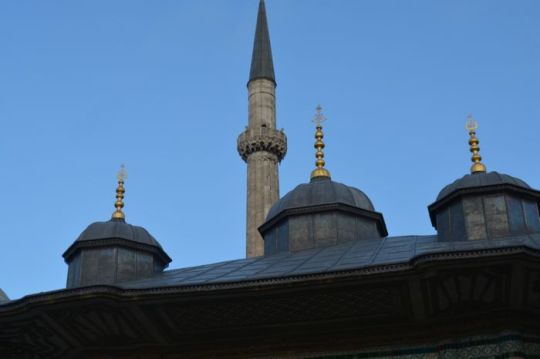
Against the Persians and Hellas
Thracian kingdoms waged wars against the Persians and Hellas for centuries. But the powerful Macedonian state of Philip II managed to crash them. It was his son, Alexander the Great, who quickly appreciated the military virtues of the Thracians and let them join the multilingual Macedonian army. After his death in 323 B. C. the Thracian king Seuth III succeeded to restore partially the former state and so the walls of the new capital city of Seuthopolis rose close to the location of present-day Bulgarian town of Kazanluk.
During the 3rd century B.C. the Romans managed to conquer the ancient Thracian lands. Later, in 74 B. C., a slave of Thracian origin who ‘graduated’ a gladiator school and became famous under the name of Spartacus headed the most continuous and mass insurrection in ancient Rome. That was the period of the so called Romanization of the Thracian world which continued until the 4th century A. D. when “The Great Migration of Peoples” began and the Thracians had to keep Celts, Huns, Goths, Avars and other barbarian tribes from invading their lands. In these circumstances the Thracians – partially Hellenized and Romanized, and having their rich and complex cultural heritage – had to stand before one of the most significant historical events for them: the disintegration of the Roman Empire in 395. In less than a century its western half was put to a collapse under the ravaging barbarian tribes from the north but the eastern part survived under the name of Byzantium with Constantinople as a capital city. Those were the days when the founders of the First Bulgarian Kingdom stepped Private Tours Balkan onto their future land…
Slavs and Proto-Bulgarians
During the 4lh to 7lh centuries the Slavs were the most multitudinous peoples in Europe.
They belonged to the Indo-European linguistic family and historians classify them usually in three main divisions: West Slavs include Poles, Czechs, Slovaks and the Wends who lived in Germany east of the river Elbe; East Slavs include Great Russians,
Little Russians (Ukrainians) and White Russians (Belorussians);
South Slavs include Serbs
Croats, Slovenes, Macedonians and Bulgarians. Originally the Slavs inhabited the lands to the north of the Carpathian Mountains but by the beginning of the 6th century Slavic tribes undertook marches to the south and crossed the Danube to loot in the territory of the Byzantine Empire. At that time a tribe of Tatar nomads, the Avars, established a kingdom (407- 653) in central Asia. In 558 they crossed the Urals and settled in Dacia after which started threatening the western countries and, of course, Constantinople. The Avars forced some of the Slavic tribes to settle permanently in various regions of the Balkan Peninsula. So were differentiated the “Bulgarian group” – which stayed in Moesia, Thrace and Macedonia – and the Serbo-Croatian group which gradually withdrew to the western half of the peninsula.
0 notes
Photo
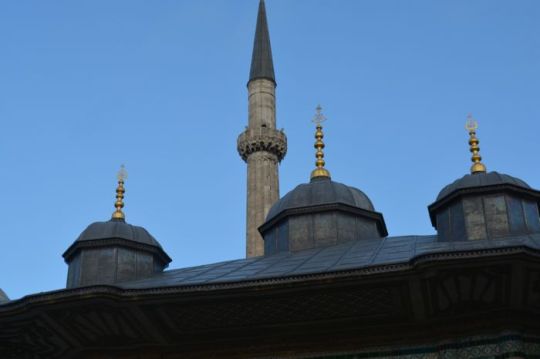
Against the Persians and Hellas
Thracian kingdoms waged wars against the Persians and Hellas for centuries. But the powerful Macedonian state of Philip II managed to crash them. It was his son, Alexander the Great, who quickly appreciated the military virtues of the Thracians and let them join the multilingual Macedonian army. After his death in 323 B. C. the Thracian king Seuth III succeeded to restore partially the former state and so the walls of the new capital city of Seuthopolis rose close to the location of present-day Bulgarian town of Kazanluk.
During the 3rd century B.C. the Romans managed to conquer the ancient Thracian lands. Later, in 74 B. C., a slave of Thracian origin who ‘graduated’ a gladiator school and became famous under the name of Spartacus headed the most continuous and mass insurrection in ancient Rome. That was the period of the so called Romanization of the Thracian world which continued until the 4th century A. D. when “The Great Migration of Peoples” began and the Thracians had to keep Celts, Huns, Goths, Avars and other barbarian tribes from invading their lands. In these circumstances the Thracians – partially Hellenized and Romanized, and having their rich and complex cultural heritage – had to stand before one of the most significant historical events for them: the disintegration of the Roman Empire in 395. In less than a century its western half was put to a collapse under the ravaging barbarian tribes from the north but the eastern part survived under the name of Byzantium with Constantinople as a capital city. Those were the days when the founders of the First Bulgarian Kingdom stepped Private Tours Balkan onto their future land…
Slavs and Proto-Bulgarians
During the 4lh to 7lh centuries the Slavs were the most multitudinous peoples in Europe.
They belonged to the Indo-European linguistic family and historians classify them usually in three main divisions: West Slavs include Poles, Czechs, Slovaks and the Wends who lived in Germany east of the river Elbe; East Slavs include Great Russians,
Little Russians (Ukrainians) and White Russians (Belorussians);
South Slavs include Serbs
Croats, Slovenes, Macedonians and Bulgarians. Originally the Slavs inhabited the lands to the north of the Carpathian Mountains but by the beginning of the 6th century Slavic tribes undertook marches to the south and crossed the Danube to loot in the territory of the Byzantine Empire. At that time a tribe of Tatar nomads, the Avars, established a kingdom (407- 653) in central Asia. In 558 they crossed the Urals and settled in Dacia after which started threatening the western countries and, of course, Constantinople. The Avars forced some of the Slavic tribes to settle permanently in various regions of the Balkan Peninsula. So were differentiated the “Bulgarian group” – which stayed in Moesia, Thrace and Macedonia – and the Serbo-Croatian group which gradually withdrew to the western half of the peninsula.
0 notes
Photo
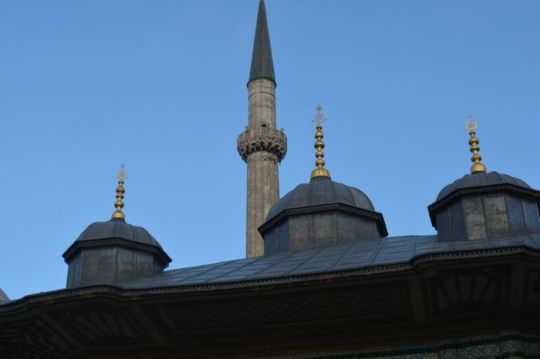
Against the Persians and Hellas
Thracian kingdoms waged wars against the Persians and Hellas for centuries. But the powerful Macedonian state of Philip II managed to crash them. It was his son, Alexander the Great, who quickly appreciated the military virtues of the Thracians and let them join the multilingual Macedonian army. After his death in 323 B. C. the Thracian king Seuth III succeeded to restore partially the former state and so the walls of the new capital city of Seuthopolis rose close to the location of present-day Bulgarian town of Kazanluk.
During the 3rd century B.C. the Romans managed to conquer the ancient Thracian lands. Later, in 74 B. C., a slave of Thracian origin who ‘graduated’ a gladiator school and became famous under the name of Spartacus headed the most continuous and mass insurrection in ancient Rome. That was the period of the so called Romanization of the Thracian world which continued until the 4th century A. D. when “The Great Migration of Peoples” began and the Thracians had to keep Celts, Huns, Goths, Avars and other barbarian tribes from invading their lands. In these circumstances the Thracians – partially Hellenized and Romanized, and having their rich and complex cultural heritage – had to stand before one of the most significant historical events for them: the disintegration of the Roman Empire in 395. In less than a century its western half was put to a collapse under the ravaging barbarian tribes from the north but the eastern part survived under the name of Byzantium with Constantinople as a capital city. Those were the days when the founders of the First Bulgarian Kingdom stepped Private Tours Balkan onto their future land…
Slavs and Proto-Bulgarians
During the 4lh to 7lh centuries the Slavs were the most multitudinous peoples in Europe.
They belonged to the Indo-European linguistic family and historians classify them usually in three main divisions: West Slavs include Poles, Czechs, Slovaks and the Wends who lived in Germany east of the river Elbe; East Slavs include Great Russians,
Little Russians (Ukrainians) and White Russians (Belorussians);
South Slavs include Serbs
Croats, Slovenes, Macedonians and Bulgarians. Originally the Slavs inhabited the lands to the north of the Carpathian Mountains but by the beginning of the 6th century Slavic tribes undertook marches to the south and crossed the Danube to loot in the territory of the Byzantine Empire. At that time a tribe of Tatar nomads, the Avars, established a kingdom (407- 653) in central Asia. In 558 they crossed the Urals and settled in Dacia after which started threatening the western countries and, of course, Constantinople. The Avars forced some of the Slavic tribes to settle permanently in various regions of the Balkan Peninsula. So were differentiated the “Bulgarian group” – which stayed in Moesia, Thrace and Macedonia – and the Serbo-Croatian group which gradually withdrew to the western half of the peninsula.
0 notes
Photo
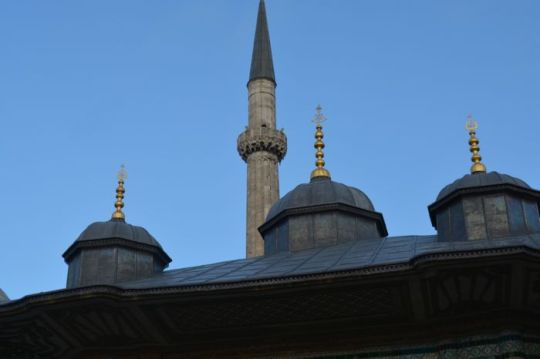
Against the Persians and Hellas
Thracian kingdoms waged wars against the Persians and Hellas for centuries. But the powerful Macedonian state of Philip II managed to crash them. It was his son, Alexander the Great, who quickly appreciated the military virtues of the Thracians and let them join the multilingual Macedonian army. After his death in 323 B. C. the Thracian king Seuth III succeeded to restore partially the former state and so the walls of the new capital city of Seuthopolis rose close to the location of present-day Bulgarian town of Kazanluk.
During the 3rd century B.C. the Romans managed to conquer the ancient Thracian lands. Later, in 74 B. C., a slave of Thracian origin who ‘graduated’ a gladiator school and became famous under the name of Spartacus headed the most continuous and mass insurrection in ancient Rome. That was the period of the so called Romanization of the Thracian world which continued until the 4th century A. D. when “The Great Migration of Peoples” began and the Thracians had to keep Celts, Huns, Goths, Avars and other barbarian tribes from invading their lands. In these circumstances the Thracians – partially Hellenized and Romanized, and having their rich and complex cultural heritage – had to stand before one of the most significant historical events for them: the disintegration of the Roman Empire in 395. In less than a century its western half was put to a collapse under the ravaging barbarian tribes from the north but the eastern part survived under the name of Byzantium with Constantinople as a capital city. Those were the days when the founders of the First Bulgarian Kingdom stepped Private Tours Balkan onto their future land…
Slavs and Proto-Bulgarians
During the 4lh to 7lh centuries the Slavs were the most multitudinous peoples in Europe.
They belonged to the Indo-European linguistic family and historians classify them usually in three main divisions: West Slavs include Poles, Czechs, Slovaks and the Wends who lived in Germany east of the river Elbe; East Slavs include Great Russians,
Little Russians (Ukrainians) and White Russians (Belorussians);
South Slavs include Serbs
Croats, Slovenes, Macedonians and Bulgarians. Originally the Slavs inhabited the lands to the north of the Carpathian Mountains but by the beginning of the 6th century Slavic tribes undertook marches to the south and crossed the Danube to loot in the territory of the Byzantine Empire. At that time a tribe of Tatar nomads, the Avars, established a kingdom (407- 653) in central Asia. In 558 they crossed the Urals and settled in Dacia after which started threatening the western countries and, of course, Constantinople. The Avars forced some of the Slavic tribes to settle permanently in various regions of the Balkan Peninsula. So were differentiated the “Bulgarian group” – which stayed in Moesia, Thrace and Macedonia – and the Serbo-Croatian group which gradually withdrew to the western half of the peninsula.
0 notes
Text
my favourite thing in the world has to be calling the 53 year old stereotypical geezer of a head chef at my work ‘pookie’
#him: HANDS! START RUNNING ON F4 😠💪🏼🍺🏴🔊#me: okay pookie!#him EVERY TIME: okay no rush 🤭#HE GETS SO GIGGLY AND FLUSTERED IT’S SO FUN#waitress vs chef culture be damned our head chef is my best friend#hella slaves to capitalism
22 notes
·
View notes
Photo
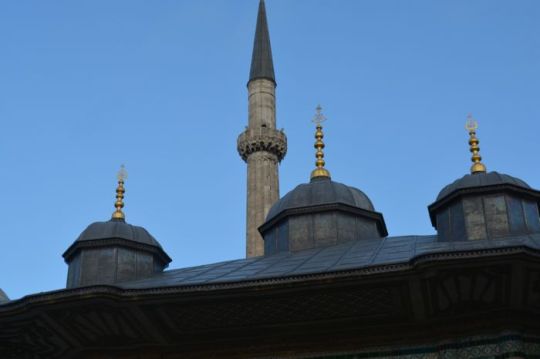
Against the Persians and Hellas
Thracian kingdoms waged wars against the Persians and Hellas for centuries. But the powerful Macedonian state of Philip II managed to crash them. It was his son, Alexander the Great, who quickly appreciated the military virtues of the Thracians and let them join the multilingual Macedonian army. After his death in 323 B. C. the Thracian king Seuth III succeeded to restore partially the former state and so the walls of the new capital city of Seuthopolis rose close to the location of present-day Bulgarian town of Kazanluk.
During the 3rd century B.C. the Romans managed to conquer the ancient Thracian lands. Later, in 74 B. C., a slave of Thracian origin who ‘graduated’ a gladiator school and became famous under the name of Spartacus headed the most continuous and mass insurrection in ancient Rome. That was the period of the so called Romanization of the Thracian world which continued until the 4th century A. D. when “The Great Migration of Peoples” began and the Thracians had to keep Celts, Huns, Goths, Avars and other barbarian tribes from invading their lands. In these circumstances the Thracians – partially Hellenized and Romanized, and having their rich and complex cultural heritage – had to stand before one of the most significant historical events for them: the disintegration of the Roman Empire in 395. In less than a century its western half was put to a collapse under the ravaging barbarian tribes from the north but the eastern part survived under the name of Byzantium with Constantinople as a capital city. Those were the days when the founders of the First Bulgarian Kingdom stepped Private Tours Balkan onto their future land…
Slavs and Proto-Bulgarians
During the 4lh to 7lh centuries the Slavs were the most multitudinous peoples in Europe.
They belonged to the Indo-European linguistic family and historians classify them usually in three main divisions: West Slavs include Poles, Czechs, Slovaks and the Wends who lived in Germany east of the river Elbe; East Slavs include Great Russians,
Little Russians (Ukrainians) and White Russians (Belorussians);
South Slavs include Serbs
Croats, Slovenes, Macedonians and Bulgarians. Originally the Slavs inhabited the lands to the north of the Carpathian Mountains but by the beginning of the 6th century Slavic tribes undertook marches to the south and crossed the Danube to loot in the territory of the Byzantine Empire. At that time a tribe of Tatar nomads, the Avars, established a kingdom (407- 653) in central Asia. In 558 they crossed the Urals and settled in Dacia after which started threatening the western countries and, of course, Constantinople. The Avars forced some of the Slavic tribes to settle permanently in various regions of the Balkan Peninsula. So were differentiated the “Bulgarian group” – which stayed in Moesia, Thrace and Macedonia – and the Serbo-Croatian group which gradually withdrew to the western half of the peninsula.
0 notes
Photo
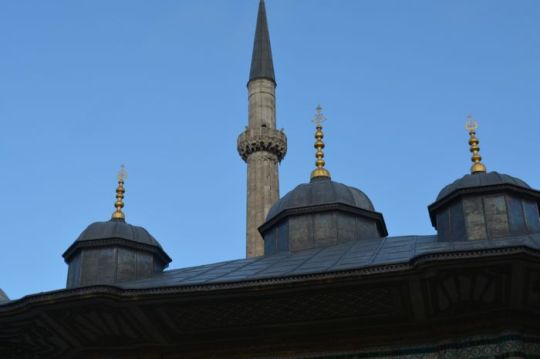
Against the Persians and Hellas
Thracian kingdoms waged wars against the Persians and Hellas for centuries. But the powerful Macedonian state of Philip II managed to crash them. It was his son, Alexander the Great, who quickly appreciated the military virtues of the Thracians and let them join the multilingual Macedonian army. After his death in 323 B. C. the Thracian king Seuth III succeeded to restore partially the former state and so the walls of the new capital city of Seuthopolis rose close to the location of present-day Bulgarian town of Kazanluk.
During the 3rd century B.C. the Romans managed to conquer the ancient Thracian lands. Later, in 74 B. C., a slave of Thracian origin who ‘graduated’ a gladiator school and became famous under the name of Spartacus headed the most continuous and mass insurrection in ancient Rome. That was the period of the so called Romanization of the Thracian world which continued until the 4th century A. D. when “The Great Migration of Peoples” began and the Thracians had to keep Celts, Huns, Goths, Avars and other barbarian tribes from invading their lands. In these circumstances the Thracians – partially Hellenized and Romanized, and having their rich and complex cultural heritage – had to stand before one of the most significant historical events for them: the disintegration of the Roman Empire in 395. In less than a century its western half was put to a collapse under the ravaging barbarian tribes from the north but the eastern part survived under the name of Byzantium with Constantinople as a capital city. Those were the days when the founders of the First Bulgarian Kingdom stepped Private Tours Balkan onto their future land…
Slavs and Proto-Bulgarians
During the 4lh to 7lh centuries the Slavs were the most multitudinous peoples in Europe.
They belonged to the Indo-European linguistic family and historians classify them usually in three main divisions: West Slavs include Poles, Czechs, Slovaks and the Wends who lived in Germany east of the river Elbe; East Slavs include Great Russians,
Little Russians (Ukrainians) and White Russians (Belorussians);
South Slavs include Serbs
Croats, Slovenes, Macedonians and Bulgarians. Originally the Slavs inhabited the lands to the north of the Carpathian Mountains but by the beginning of the 6th century Slavic tribes undertook marches to the south and crossed the Danube to loot in the territory of the Byzantine Empire. At that time a tribe of Tatar nomads, the Avars, established a kingdom (407- 653) in central Asia. In 558 they crossed the Urals and settled in Dacia after which started threatening the western countries and, of course, Constantinople. The Avars forced some of the Slavic tribes to settle permanently in various regions of the Balkan Peninsula. So were differentiated the “Bulgarian group” – which stayed in Moesia, Thrace and Macedonia – and the Serbo-Croatian group which gradually withdrew to the western half of the peninsula.
0 notes
Photo
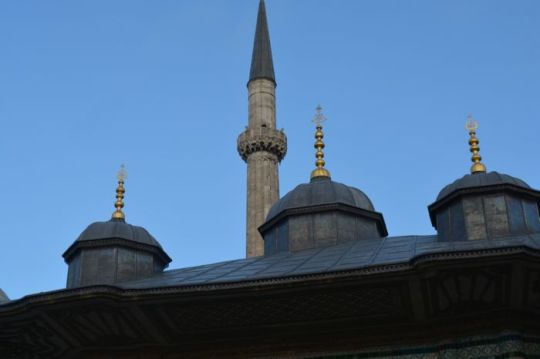
Against the Persians and Hellas
Thracian kingdoms waged wars against the Persians and Hellas for centuries. But the powerful Macedonian state of Philip II managed to crash them. It was his son, Alexander the Great, who quickly appreciated the military virtues of the Thracians and let them join the multilingual Macedonian army. After his death in 323 B. C. the Thracian king Seuth III succeeded to restore partially the former state and so the walls of the new capital city of Seuthopolis rose close to the location of present-day Bulgarian town of Kazanluk.
During the 3rd century B.C. the Romans managed to conquer the ancient Thracian lands. Later, in 74 B. C., a slave of Thracian origin who ‘graduated’ a gladiator school and became famous under the name of Spartacus headed the most continuous and mass insurrection in ancient Rome. That was the period of the so called Romanization of the Thracian world which continued until the 4th century A. D. when “The Great Migration of Peoples” began and the Thracians had to keep Celts, Huns, Goths, Avars and other barbarian tribes from invading their lands. In these circumstances the Thracians – partially Hellenized and Romanized, and having their rich and complex cultural heritage – had to stand before one of the most significant historical events for them: the disintegration of the Roman Empire in 395. In less than a century its western half was put to a collapse under the ravaging barbarian tribes from the north but the eastern part survived under the name of Byzantium with Constantinople as a capital city. Those were the days when the founders of the First Bulgarian Kingdom stepped Private Tours Balkan onto their future land…
Slavs and Proto-Bulgarians
During the 4lh to 7lh centuries the Slavs were the most multitudinous peoples in Europe.
They belonged to the Indo-European linguistic family and historians classify them usually in three main divisions: West Slavs include Poles, Czechs, Slovaks and the Wends who lived in Germany east of the river Elbe; East Slavs include Great Russians,
Little Russians (Ukrainians) and White Russians (Belorussians);
South Slavs include Serbs
Croats, Slovenes, Macedonians and Bulgarians. Originally the Slavs inhabited the lands to the north of the Carpathian Mountains but by the beginning of the 6th century Slavic tribes undertook marches to the south and crossed the Danube to loot in the territory of the Byzantine Empire. At that time a tribe of Tatar nomads, the Avars, established a kingdom (407- 653) in central Asia. In 558 they crossed the Urals and settled in Dacia after which started threatening the western countries and, of course, Constantinople. The Avars forced some of the Slavic tribes to settle permanently in various regions of the Balkan Peninsula. So were differentiated the “Bulgarian group” – which stayed in Moesia, Thrace and Macedonia – and the Serbo-Croatian group which gradually withdrew to the western half of the peninsula.
0 notes
Photo
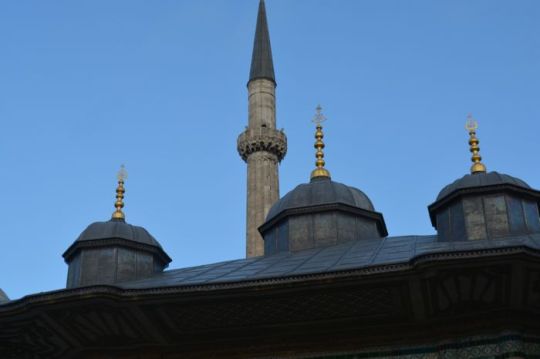
Against the Persians and Hellas
Thracian kingdoms waged wars against the Persians and Hellas for centuries. But the powerful Macedonian state of Philip II managed to crash them. It was his son, Alexander the Great, who quickly appreciated the military virtues of the Thracians and let them join the multilingual Macedonian army. After his death in 323 B. C. the Thracian king Seuth III succeeded to restore partially the former state and so the walls of the new capital city of Seuthopolis rose close to the location of present-day Bulgarian town of Kazanluk.
During the 3rd century B.C. the Romans managed to conquer the ancient Thracian lands. Later, in 74 B. C., a slave of Thracian origin who ‘graduated’ a gladiator school and became famous under the name of Spartacus headed the most continuous and mass insurrection in ancient Rome. That was the period of the so called Romanization of the Thracian world which continued until the 4th century A. D. when “The Great Migration of Peoples” began and the Thracians had to keep Celts, Huns, Goths, Avars and other barbarian tribes from invading their lands. In these circumstances the Thracians – partially Hellenized and Romanized, and having their rich and complex cultural heritage – had to stand before one of the most significant historical events for them: the disintegration of the Roman Empire in 395. In less than a century its western half was put to a collapse under the ravaging barbarian tribes from the north but the eastern part survived under the name of Byzantium with Constantinople as a capital city. Those were the days when the founders of the First Bulgarian Kingdom stepped Private Tours Balkan onto their future land…
Slavs and Proto-Bulgarians
During the 4lh to 7lh centuries the Slavs were the most multitudinous peoples in Europe.
They belonged to the Indo-European linguistic family and historians classify them usually in three main divisions: West Slavs include Poles, Czechs, Slovaks and the Wends who lived in Germany east of the river Elbe; East Slavs include Great Russians,
Little Russians (Ukrainians) and White Russians (Belorussians);
South Slavs include Serbs
Croats, Slovenes, Macedonians and Bulgarians. Originally the Slavs inhabited the lands to the north of the Carpathian Mountains but by the beginning of the 6th century Slavic tribes undertook marches to the south and crossed the Danube to loot in the territory of the Byzantine Empire. At that time a tribe of Tatar nomads, the Avars, established a kingdom (407- 653) in central Asia. In 558 they crossed the Urals and settled in Dacia after which started threatening the western countries and, of course, Constantinople. The Avars forced some of the Slavic tribes to settle permanently in various regions of the Balkan Peninsula. So were differentiated the “Bulgarian group” – which stayed in Moesia, Thrace and Macedonia – and the Serbo-Croatian group which gradually withdrew to the western half of the peninsula.
0 notes
Photo
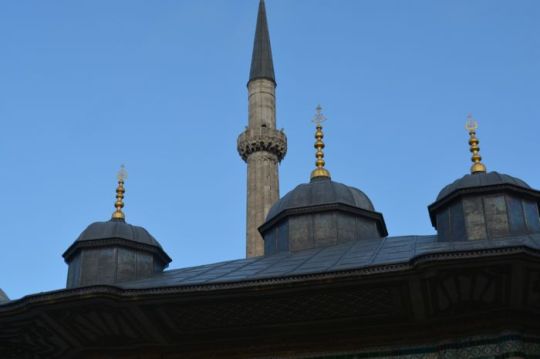
Against the Persians and Hellas
Thracian kingdoms waged wars against the Persians and Hellas for centuries. But the powerful Macedonian state of Philip II managed to crash them. It was his son, Alexander the Great, who quickly appreciated the military virtues of the Thracians and let them join the multilingual Macedonian army. After his death in 323 B. C. the Thracian king Seuth III succeeded to restore partially the former state and so the walls of the new capital city of Seuthopolis rose close to the location of present-day Bulgarian town of Kazanluk.
During the 3rd century B.C. the Romans managed to conquer the ancient Thracian lands. Later, in 74 B. C., a slave of Thracian origin who ‘graduated’ a gladiator school and became famous under the name of Spartacus headed the most continuous and mass insurrection in ancient Rome. That was the period of the so called Romanization of the Thracian world which continued until the 4th century A. D. when “The Great Migration of Peoples” began and the Thracians had to keep Celts, Huns, Goths, Avars and other barbarian tribes from invading their lands. In these circumstances the Thracians – partially Hellenized and Romanized, and having their rich and complex cultural heritage – had to stand before one of the most significant historical events for them: the disintegration of the Roman Empire in 395. In less than a century its western half was put to a collapse under the ravaging barbarian tribes from the north but the eastern part survived under the name of Byzantium with Constantinople as a capital city. Those were the days when the founders of the First Bulgarian Kingdom stepped Private Tours Balkan onto their future land…
Slavs and Proto-Bulgarians
During the 4lh to 7lh centuries the Slavs were the most multitudinous peoples in Europe.
They belonged to the Indo-European linguistic family and historians classify them usually in three main divisions: West Slavs include Poles, Czechs, Slovaks and the Wends who lived in Germany east of the river Elbe; East Slavs include Great Russians,
Little Russians (Ukrainians) and White Russians (Belorussians);
South Slavs include Serbs
Croats, Slovenes, Macedonians and Bulgarians. Originally the Slavs inhabited the lands to the north of the Carpathian Mountains but by the beginning of the 6th century Slavic tribes undertook marches to the south and crossed the Danube to loot in the territory of the Byzantine Empire. At that time a tribe of Tatar nomads, the Avars, established a kingdom (407- 653) in central Asia. In 558 they crossed the Urals and settled in Dacia after which started threatening the western countries and, of course, Constantinople. The Avars forced some of the Slavic tribes to settle permanently in various regions of the Balkan Peninsula. So were differentiated the “Bulgarian group” – which stayed in Moesia, Thrace and Macedonia – and the Serbo-Croatian group which gradually withdrew to the western half of the peninsula.
0 notes